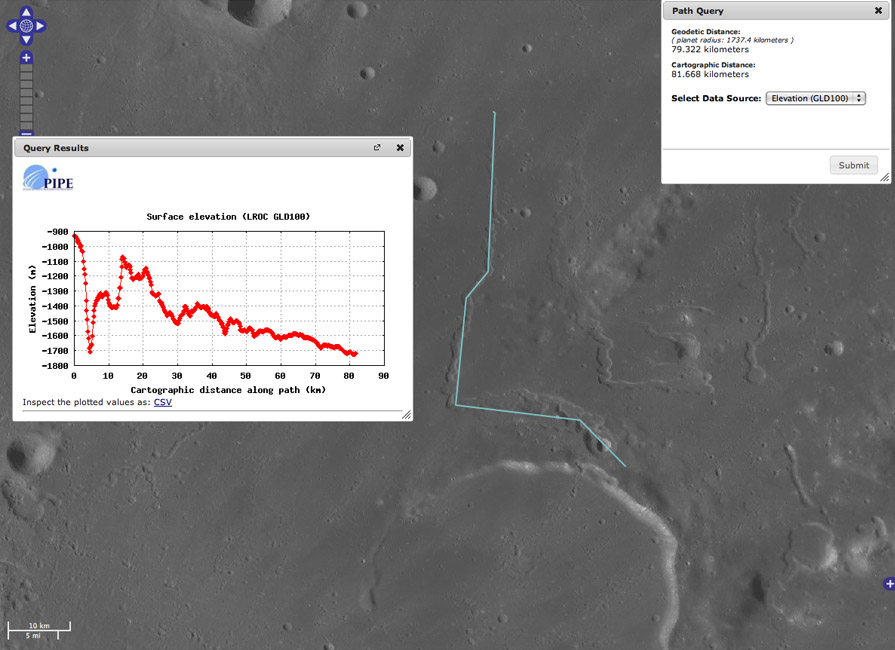March 17, 2012
Do Rilles Flow Downslope?

image from LRO QUick Map (ASU/GSFC/NASA)
Yes, at least this one does. Using a new capability within the Lunar Reconnaissance Orbiter ACT-REACT Quick Map, you can now measure topographic cross-sections anywhere on the Moon. Since stumbling upon this - was it announced anywhere? - I have been obsessively exploring the ups and downs of many lunar areas. But here we see the sinuous rille north of Prinz that starts in the pit within a pit called Vera and extends 81 km to the north. The cross-section (the left end is the start near Vera) shows that the rille did indeed flow downslope. Notice the small underlined "CSV" beneath the graph? Clicking it gives a long list of the depths - from the LRO laser altimeter (LOLA) - every 200 m along the trace. So I can see that from a distance of 14.09 km to 81.67 km the distance decreased by 646 m, for a drop of about 1 km in a 100 km. This seems quite a low slope, but lunar lavas were very fluid so they could flow long ways along shallow slopes. Using such precise LOLA data it will be possible to compare the sinuosity of rilles (how many bends they have per 100 km, say) with their downhill slope. Steep slopes should produce fewer bends, and shallow ones more. There are other capabilities with this new Quick Map, but let me stay with altimetry traces. Bliss is 3 km deep and Plato is only half that. Plato's floor is about 500 m higher than nearby Mare Imbrium lavas and Cassini's is about 300 m higher, whereas the floor of Archimedes is about 300 m below the nearby mare. Don't waste all Saturday on this, but from now on all descriptions of features can include accurate topography.
Chuck Wood
Related Links
Rükl plate 19
COMMENTS?
Register, and click on the Discussion tab at the top of the page.
You can support LPOD when you buy any book from Amazon thru LPOD!
Contributions to http://www2.lpod.org/ are licensed under a Creative Commons Attribution No-Derivative-Works Non-Commercial 3.0 License. 



